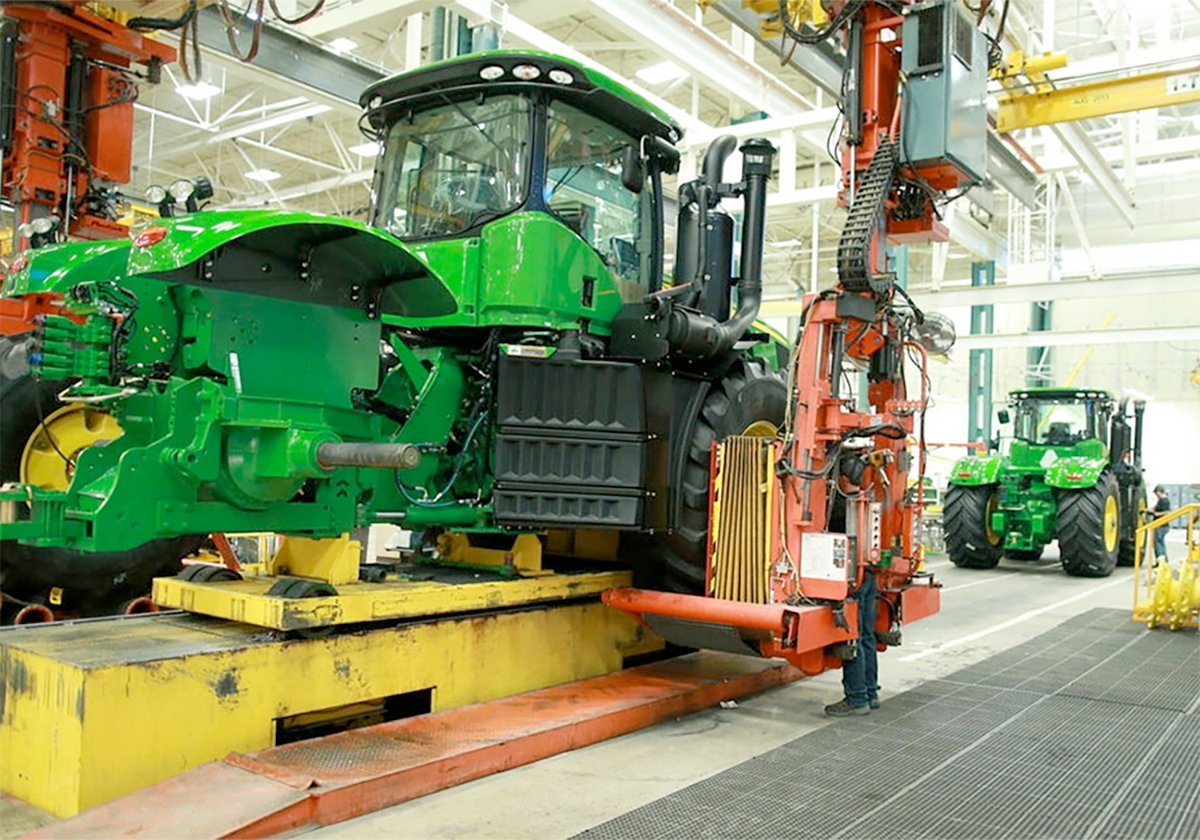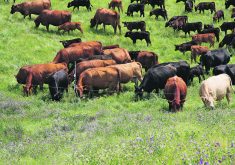Paraguay and soy; Renewable energy; Farmers gouged; Biotech & yield; Wyeth actions; My CWB
Paraguay and soy
Having lived and worked in rural Paraguay on and off for some years, I was surprised to find such a rosy picture of the Paraguayan soybean sector in your recent article, “Paraguay takes soybeans by storm” (WP, May 14.)
Paraguay is, as you say, a small and underdeveloped country, and there are reasons to laud a new form of production and income-generation. But make no mistake that such rapid and massive transformations also have devastating effects on the rural poor, are abetted by waves of frontier violence, crop destruction, political assassinations, pesticide poisoning and organized arson, not to mention astoundingly rapid ecological destruction.
Read Also

Trump’s trade policies take their toll on Canadian producers
U.S. trade policy as dictated by president Donald Trump is hurting Canadian farmers in a multitude of ways.
Sonia Tomassone characterizes the soy boom as something that she and her friends in the industry simply dreamt up one day in the mid-1990s.
The truth of the matter is that it has been a long process of aggressive frontier expansion, driven primarily by speculators from Brazil working, with the complicity of Paraguay’s military and police, almost entirely outside of Paraguay’s formal economy or regulatory framework.
That situation has only recently begun to change, with industry groups resisting the imposition of taxes and environmental regulations the entire way.
Farmers may not be to blame for unequal distributions of wealth in Paraguay, but the growth of the soy industry has definitely created previously unheard-of concentrations of wealth in rural areas.
Most of the soybean expansion happens by concentrating smaller landholdings in peasant communities, creating new populations of dispossessed and unemployed. …
Furthermore, it is misleading to compare Paraguay favourably to Brazil on environmental terms. Smallholder communities on the soybean frontier, often divided now by fields of beans, have become very difficult to live in, with lax and practically unenforced environmental laws, and no control on who sprays what, when.
Paraguay is already largely deforested by previous agricultural booms, but most agricultural areas were, until recently, somewhat mixed, with bits of forest competing with mixed crops of small farmers.
The requirements of soybean production mean that the landscape has been further denuded, with the last remnants of the mixed economy simply ripped out of the ground.
Many of my friends, who can no longer make their living as farm labourers, because Roundup Ready soybeans require almost no labour, have taken to working night shifts on logging crews in northern Paraguay, the last frontier of deforestation.
– Kregg Hetherington,
Department of Sociologyand Social Anthropology,
Dalhousie University,
Halifax, N.S.
Renewable energy
The Saskatchewan Chamber of Commerce has unveiled portions of its marketing campaign to promote a nuclear reactor in Saskatchewan. Its website states it wants to bring us the facts, not the myths, about nuclear energy.
The other day I heard Steve McLellan, CEO of the Chamber of Commerce, on the John Gormley radio program.
He said: “We cannot consider alternative energy sources because the wind does not always blow and the sun does not always shine so alternative energy sources cannot provide base power.”
That’s a myth. There are no less than six viable ways to store energy from wind and solar. Once you store energy, it can be drawn on demand to provide base power.
I don’t expect Steve or John to know this because we have not commissioned an expert renewable energy task force to present the facts about renewable energy.
If we could convince our provincial government to take the next logical and prudent step, establish an expert renewable energy task force to carefully examine these growing energy sources, then we would have the information required to look critically at both nuclear and renewable energy and choose a future energy supply that makes the most sense for Saskatchewan….
– James Zimmerman,
Meota, Sask.
Farmers gouged
While people are out there rallying to save the prison farms, I feel most people are missing the biggest lesson to be learned in all of this.
Government farms that have a free labour force and guaranteed incomes are losing money. What should that be telling the rest of the country about farmers with huge overhead costs and a heap of uncertainty in whatever type of farming they are in?
Grain farmers finally started turning a profit and everyone lined up with their hand out….
An article I read in The Western Producer titled, “Possible fertilizer reduction worrisome” (April 30), where Bill Doyle, the head of PotashCorp said that farmers reducing their application of fertilizer at unprecedented levels across the continent, 30-35 percent could have serious consequences with food shortages but that farmers’ decisions to reduce fertilizer were not based on economics. He said dropping the price of fertilizer does not increase demand.
Either Mr. Doyle is a very stupid man or he thinks the rest of the world is, to believe such a statement. This year a reduced rate of nitrogen will go on my 800 acres of hay. No potash, no phosphorus.
I, like many other farmers, refuse to or cannot afford these ridiculous prices. Not only were farmers held hostage and many scared into buying fertilizer last fall at inflated prices, they were again exploited on the retail end as the record high price of grain only accounted for an 11 cent increase in a loaf of bread.
Grocery prices shot up around the world and everyone pointed their fingers at the greedy farmer.
Fertilizer plants have demonstrated last winter that they would rather lay off workers than give farmers affordable fertilizer.
Yes, Mr. Doyle, the world may go hungry someday and there will be shortages but it will not be for a lack of effort on the farmers’ part.
When you charge too much for your product, customers look elsewhere for alternatives. Whether it’s you selling your fertilizer or me selling my hay, we’d best be happy making a living, not gouging.
If government really wants to make a difference for farmers, make sure your Canadian farmers have an adequate, affordable supply of fuel and fertilizer before they supply the rest of the world with our resources. Farmers across Canada should be rallying for this.
– Ron Taks,
Bowden, Alta.
Biotech & yield
The wonder of producing a good crop cannot be underestimated in the return to a farmer.
There is nothing more amazing and rewarding than producing that high yielding field of any commodity.
We are amazed at canola fields we grow that exceed our expectations.
However, I note that farm net income was highest in the 1970s before biotech. With each decade, despite increasing yields produced, net farm income earned from the marketplace in Canada continued a slow and steady decline.
Despite an increase in net farm income today, aggregate net farm income is still below the levels of the ’70s, which was pre-biotech times. While I expect we can cite other reasons for increasing production around the world than simply biotechnology in seeds, we can note the increasing costs of farm supply from seed to herbicide to fungicides….
We can graph the fact that costs have increased faster than net income, and so a producer must question who benefits most from high volume cheap grain: farmers, suppliers, consumers?
While as a farmer I know that wonder wheat will amaze the industry, I also note with increasing climatic risks of production expected to be created by an ever-volatile climate, who will decide what is left for a farmer to endure these cycles. As cash costs increase, a farmer’s ability to risk manage becomes less….
At the end of the day, the consumer may have no choice but to buy biotech grain. We should be sure that the consumer is on side before we hand the producer the bill.
– Vicki Dutton,
Paynton, Sask.
Wyeth actions
So Wyeth Pharmaceuticals is cutting its contracts with seven more pregnant mare urine (PMU) producers because the “company is managing the product and managing the inventory. It is obviously based on demand,” (WP, June 4, “Wyeth reduces PMU ranches”).
If this is really the case, why did CTV National do a major news story earlier this week on the price of Premarin, the drug made from pregnant mare urine used in hormone replacement therapy (HRT)? The price has more than tripled in the past month, limiting its availability to users, as it is not covered by most medical plans.
A Wyeth spokesman stated that the price increase was due to the limited availability of the drug and difficulty obtaining the component products. Huh.
So what is the real reason? You can’t have it both ways.
Many PMU barns lost their contracts in the late 1990s due the link between HRT and cervical cancer. Many doctors took their patients off HRT.
The horse industry is still trying to absorb the number of horses put on the market by this major dissolution.
However, Premarin is a money maker for Wyeth and, link between cervical cancer or not, many women will take the risk against the alternative.
So in the last 10 years we have again seen a rise in the prescribing of HRT.
Not only are seven family incomes severely compromised, the ripple effect is much larger than quoted in The Western Producer.
For those of us who are breeders, there is apparently no bottom to the horse market. Now there are at least 3,500 more horses on the market.
As stated earlier, we are still trying to absorb the PMU horses put on the market 10 years ago. This is compounded by the slaughter ban in the United States.
Thousands of horses are flooding into Canada, many being offered for sale, others going directly to slaughter.
With this influx, the basic horse price is 30 cents per pound or less, on the rail. It is not uncommon to buy a papered, well-bred mare and foal at auction for less than $700.
Many of us responsible breeders have stopped producing altogether, waiting for prices to rebound.
However, we still have our carefully selected mares and stallions to look after. With the price of feed rising, it is a grim outlook for horse producers.
– Donna O’Neil,
New Sarepta, Alta.
My CWB
With logic like that (“Held captive,” Open Forum, June 4) perhaps Vicki Dutton should be locked up.
Does she feel captive when she doesn’t get her way on the hours of operation of her community centre?
Does she feel captive when she doesn’t get the reeve that she voted for?
It seems that she has been locked up by an attitude that precludes any logical comprehension of the facts.
In fact, isolated as she sounds, she never had the chance to, or never wanted to, read the results of the studies done by two eminent economists – that the Canadian Wheat Board has returned hundreds of millions of dollars year after year, over and above what the open market would have earned for farmers.
The CWB is a democratic institution controlled by farmers themselves.
It markets all farmers’ grain as if it was one, thereby eliminating any potential for one individual to underbid another.
It is the last remaining tool that farmers have any control over, since all the grain companies are privately owned and the railways are foreign controlled.
Ask any businessman if he would like to have a monopoly on the products he sells. You can guess the answer.
It seems logical to me that farmers should be trying to strengthen the CWB, rather than giving it away to foreign investors whose only concern is a return to their investors.
This is my CWB.
– Keith Ryan,
Rosser, Man.














